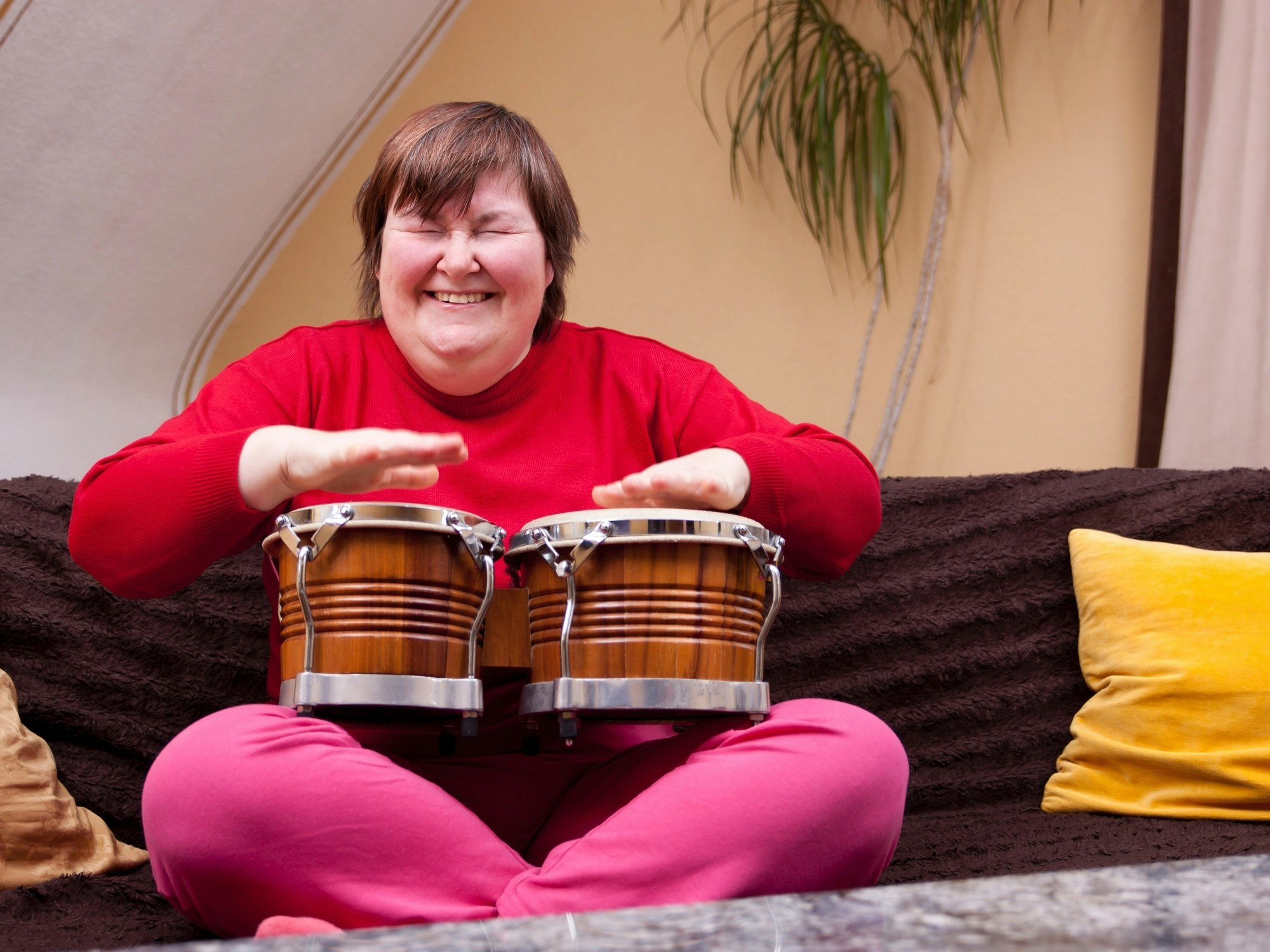What are my adaptive music options?
Last updated

Music is a universal language, known to improve mood, communication and motivation, with scientific evidence suggesting certain beats can increase mental wellness, reduce pain, and even improve sleep.
Key Points:
- There are many musical instruments that have been adapted for people with disability to use
- People who have low vision or are vision impaired can access sheet music in braille
- There are many options available for people with disability to learn and get involved with music
A number of options are available to people living with a disability to either play an adapted mainstream instrument, specific musical instruments for people with disability, or learn in an inclusive and safe environment with accessible music or specialised classes.
Playing mainstream instruments
Mainstream instruments can be made accessible with adaptive equipment so people with disability can still use an instrument they love or would like to play.
For example, there are tools available to assist with fretting a guitar, playing chords and an augmented pick is an aid that allows the instrument to be usable for a person with disability.
Similarly, prosthetics like the X-Finger has allowed people with physical disabilities to have an operational hand to allow for fluent piano playing.
Adapted musical instruments
A variety of adapted instruments and accessories have been created for people living with a disability, so anyone, no matter their abilities, may experience the joys and benefits of playing and listening to music.
Adapted instruments have all sorts of assistive features, like switch-adapted equipment, as well as accessories and instruments that are hands-free and breath-powered, adapted tambourines, maracas, jingle sticks, bongo drums, and instruments that can be played with your eye movement.
One example of an adapted instruments is the EyeHarp, which is an electronic musical instrument controlled by the player’s eye or head movements. The instrument combines eye tracking hardware and specially designed software which can define chords and arpeggios, and translates that into music.
Created by computer scientist and musician Zacharias Vamvakousis, he was encouraged to make an accessible instrument after noticing there were no musical instruments available to quadriplegic people after a friend was involved in a serious motorcycle accident.
Other adapted musical instruments include devices that can be played with any part of the body, devices that can be played using sensory technology to translate movement into music and sound, and instruments using “breath-power”.
Playing adapted instruments provides many benefits to people living with disability, shown to improve motor function, communication, social interaction and self-expression.
Sheet music produced in braille
For musicians with low vision or a vision impairment, there are businesses and organisations across the country that offer services to produce sheet music in braille.
The Australian Braille Authority oversees the development and maintenance of braille codes and specifications used in Australia, and features a directory of all braille services in the country.
Vision Australia also provides braille music transcription for commercial organisations, tertiary institutions and individuals, while Education Queensland and South Australian School For Vision Impaired produces embossed or electronic files of braille music for students.
Options to learn and get involved
Music lessons that can be tailored to you and your disability are also available, with some services offering group workshops or individual sessions for you to learn, attend, have fun and socialise.
The Keys of Life Foundation has teachers across the east coast of Australia and provide online modules to train instrumental music teachers in teaching music to children with disabilities and diverse learning needs.
The program allows teachers to explore and realise the unique skills that a lot of diverse-learning-needs children have.
The method concentrates on developing good fine motor skills, fostering a musical ear and awareness of pitch, and working closely with each individual student’s strengths and behavioural traits to enhance the enjoyment and success of music making.
There are many services available in Australia that can provide music lessons to people with disability, including through the National Disability Insurance Scheme.
What instrument would you like to see adapted for people with disability? Tell us in the comments below.
Related content:
Tune in to the benefits of music therapy
Building skills through your interests and hobbies
Understanding the role of allied health assistants in your therapy